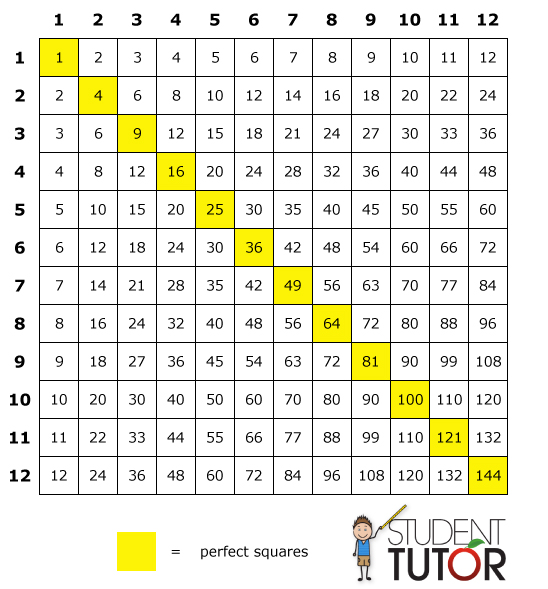
Skip counting is when you count in increments other than one.For example skip counting by two goes like this: 2, 4, 6, 8, 10, 12, 14, 16, 18, 20. Skip Counting – try teaching your child to skip count.You can use a hundreds chart to demonstrate the multiplication patterns that each times table creates. Hundreds Chart – use a hundreds chart to show your child how multiplication works.See our times table video page for our recommendations >. Times Table Videos – there are many great videos online that you can use to help teach your child the times tables.Find the answer – call out random multiplication questions and have your child find the answer on the chart.Simplify the task – If your child is only starting to learn the times tables it might be better to begin with the 1-5 times tables chart.Work in sections – Start with the easier times tables – two, three, five and ten are generally the easier ones to learn.Remember – committing all the products to memory will take time, it won’t happen in one sitting! Focus on one factor at a time – Stick to one factor and ‘play’ with it until your child becomes familiar with it and its products.Practice makes perfect – when learning a new times table have your child recite the times table from the chart.Times tables can be challenging to learn so here are some suggestions to make it fun and interesting for your child: Please see the parent's guide below for more information and the links to games and other activities to support your child's preparation for the test.Visit our multiplication chart 1-100 page for more information on these types of charts >.ĭownload the printable Multiplication Chart to 100 > Using the times tables chart The MTC will be delivered as an online, on-screen digital assessment and will take each pupil less than 5 minutes to complete. The national curriculum states, ‘By the end of year 4, pupils should have memorised their multiplication tables up to and including the 12 multiplication table and show precision and fluency in their work’. This is included in the national curriculum (2014) statutory programme of study for mathematics at Key Stage 1 and Key Stage 2. The MTC is focused on the fluent recall of multiplication facts. The purpose of the MTC is to determine whether year 4 pupils can fluently recall their multiplication tables. In June 2019, a new Year 4 Multiplication Tables Check (MTC) will be trialled across the UK, becoming statutory in 2020. The first ten prime numbers are: 2,3,5,7,11,13,17,19,23,29.Īrray – As shown, an array is a visual representation of multiplication. Prime – A prime number will only divide equally between 1 and itself e.g. the product of 3 and 4 is 12 (3 x 4 = 12). Product - A product is the answer you get when you multiply two or more numbers together. The multiples of 5 are 5, 10, 15, 20 etc. 20 is a multiple of 5, 4, 2 and 10 because it is found in all of those times tables. Multiple - These are the numbers that you find in a times table. Groups of/ lots of/ sets of – 3 groups of 5 are 15, 3 lots of 5 are 15, 3 sets of 5 are 15 (3 x 5 = 15). 6 is a factor of 30 because it goes into it 5 times, but is not a factor of 33 because after dividing there is a remainder of 3. Here are some of the trickier words defined:įactor – One number is a factor of another if it divides or ‘goes into’ it exactly (without any left over, a remainder). Subtraction multiple sets of remainder halve Repeated addition times factors array double repeated Multiply divide prime product once twice three times lots of Here are some words that may be used whilst learning and applying multiplication and division: In school we regularly spend time learning times tables, but a child will be much more successful if they practise outside school independently and alongside parents. Learning multiplication facts and tables are most effective when there is collaboration with school, parents and children. A child who knows their times tables will be able to recall any of the multiples of a times table out of order within 3 seconds, as well as knowing the corresponding division facts i.e. It is worth explaining what we mean by ‘knowing’ times tables.

Children who are secure in their times tables knowledge are able to get to grips with trickier tasks straight away and are far more successful. Many mental maths activities and tests require a quick recall of multiplication and division facts.

Without a thorough understanding of multiplication and division facts, children frequently get ‘lost’ when it comes to do anything with fractions and any multiplication or division with larger numbers.


Knowing times tables facts is crucially important to your child’s progression in their mathematics education.


 0 kommentar(er)
0 kommentar(er)
